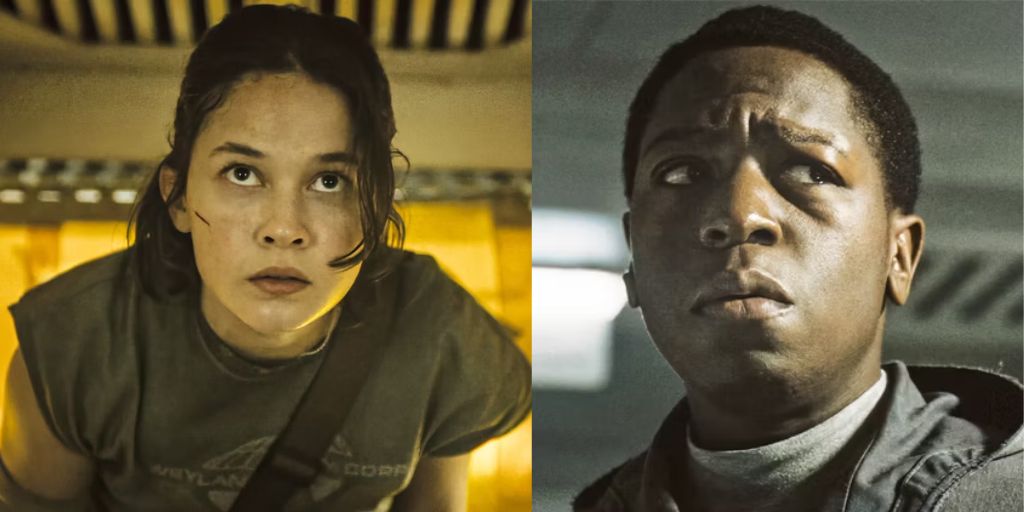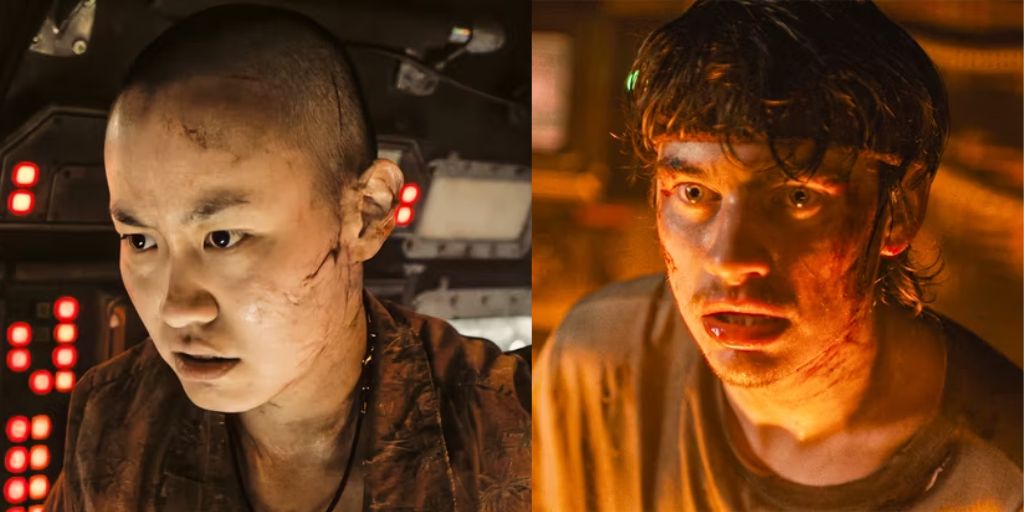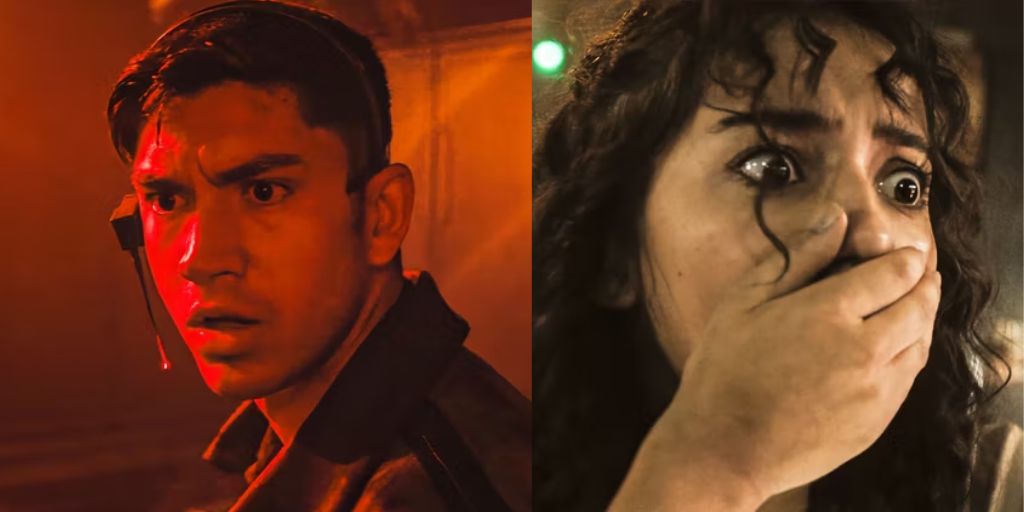In “Alien: Romulus,” the latest entry in the horror-action series by director and co-writer Fede Álvarez (known for “Don’t Breathe” and “Evil Dead”), there is a repeated theme of doing what’s best for the company. This company is Weyland-Yutani, a future conglomerate whose greed and curiosity have led to deadly xenomorph encounters on misguided space missions.
On a larger scale, “Alien: Romulus” is also focused on doing what’s best for its own company, 20th Century Studios, marking its first release since being acquired by the Walt Disney Company.
As the seventh film in this long-running series, it is clear that the company wants this franchise to continue for years to come, while reminding audiences of what they love about this universe.
However, “Alien: Romulus” has high ambitions but gets bogged down by nostalgia, overshadowing its more intriguing ideas.
What Is ‘Alien: Romulus’ About?
“Romulus” is set in a star mining colony owned by Weyland-Yutani, where we meet Rain (Cailee Spaeny), who is trying to escape her contract. She thought she was free to leave, but her quotas have increased, and now she is stuck in the mines for 5-6 years, the same mines where her parents died.
Rain’s only companion is her malfunctioning synthetic android “brother” Andy (David Jonsson). Feeling trapped and hopeless, Rain joins a group of friends and fellow young space colonizers who have a plan to escape their dire situation.

They find an abandoned space station nearby with unused hypersleep chambers, which could help them cryosleep their way to a better place: the planet Yvaga. Rain has never seen the sun on the colony, but on Yvaga, she dreams of finally seeing it.
Rain, Andy, and their friends Tyler (Archie Renaux), Kay (Isabela Merced), Bjorn (Spike Fearn), and Navarro (Aileen Wu) head to the Romulus space station for what they hope will be a quick mission.
They do not realize that this abandoned ship was once a Weyland-Yutani vessel that captured a xenomorph between the events of “Alien” and “Aliens.” As expected, things went poorly for that ship’s crew, and now it is filled with deadly alien life.
Rain, Andy, and the rest of the crew must survive this deadly ship while dealing with interference from the Weyland-Yutani corporation.
‘Alien: Romulus’ Starts Promising, Then Focuses Too Much on the Past
“Romulus,” written by Álvarez and his “Evil Dead” and “Don’t Breathe” collaborator Rodo Sayagues, begins with a strong focus on the working-class crews exploited by Weyland-Yutani. The mining colony is a bleak place, filled with unhappy workers stuck in space without sunlight, just trying to survive.
The Alien franchise has often highlighted these workers, and showing their tough situation adds depth to their characters. Unfortunately, “Romulus” soon shifts from exploring capitalism and worker exploitation to a more traditional direction for the series.
Once the crew boards the Romulus, the film often feels like a greatest-hits compilation of the Alien franchise. Álvarez and Sayagues blend horror and action well, creating some memorable scenes, like one involving xenomorph acid in zero gravity.
However, as the film delves deeper into its plot and the goals of those in power, it sometimes revisits the series’ history rather than presenting new ideas. Even “Prometheus” gets a brief nod with a reference to its score. While it’s clear that Álvarez and Sayagues love this universe and include nods to previous films, these references often feel like mere Easter eggs.
Without giving away too much, one of the film’s more glaring uses of nostalgia is a direct callback to the original movie. This throwback features awkward CGI and relies heavily on familiar elements rather than introducing new antagonists outside of the xenomorphs.
Álvarez and Sayagues aim to bridge the events between “Alien” and “Aliens,” but this approach sometimes makes “Romulus” feel like a mere addition to the original film’s story rather than a standalone narrative.
However, Álvarez and cinematographer Galo Olivares (known for “Gretel & Hansel”) create a visually appealing film, blending futuristic and outdated elements. There is a comforting familiarity for fans of the series, and despite the throwback references, “Romulus” mixes CGI and practical effects well, leading to some unique action sequences.
‘Alien: Romulus’ Works Best When Director Fede Álvarez Embraces Horror
In the film’s third act, Álvarez’s horror skills truly shine. “Romulus” starts strong with its focus on the lower class, struggles in the middle with its reference-heavy approach, and picks up in its intense finale.
Álvarez uses his horror background to build tension and discomfort, placing characters in close proximity to the camera and creating a chilling atmosphere. The ending, while paying homage to “Alien,” manages to leave its own mark on the series by blending horror with its universe in a fresh way.
David Jonsson Is a Standout in ‘Alien: Romulus’
The film also benefits from a strong cast, particularly Spaeny and Jonsson. Their dynamic evolves throughout the film, shifting from lifelong friends to questioning each other’s motives. Spaeny’s Rain is clever and aware of her dire situation, but also uncertain about her future.

While Sigourney Weaver’s Ripley was known for her strength and confidence, Spaeny’s portrayal adds a layer of vulnerability to the character.
Jonsson stands out as Andy, the android who must balance his loyalty to his friend with his programming to follow company directives. As the humans around him make questionable choices, Andy’s emotional detachment contrasts with their decisions, making him a compelling character.
Jonsson’s performance is attracting, adding depth to Andy’s journey from uncertainty to focused determination. The synthetic androids in the Alien films have always been intriguing, and Jonsson continues this tradition with his standout performance.
“Alien: Romulus” has many strong ideas and offers a fresh take on the world, but it is hampered by its reliance on past references and callbacks. The film shows that for the Alien franchise to advance, it may need to focus more on new ideas rather than looking back at its history.





